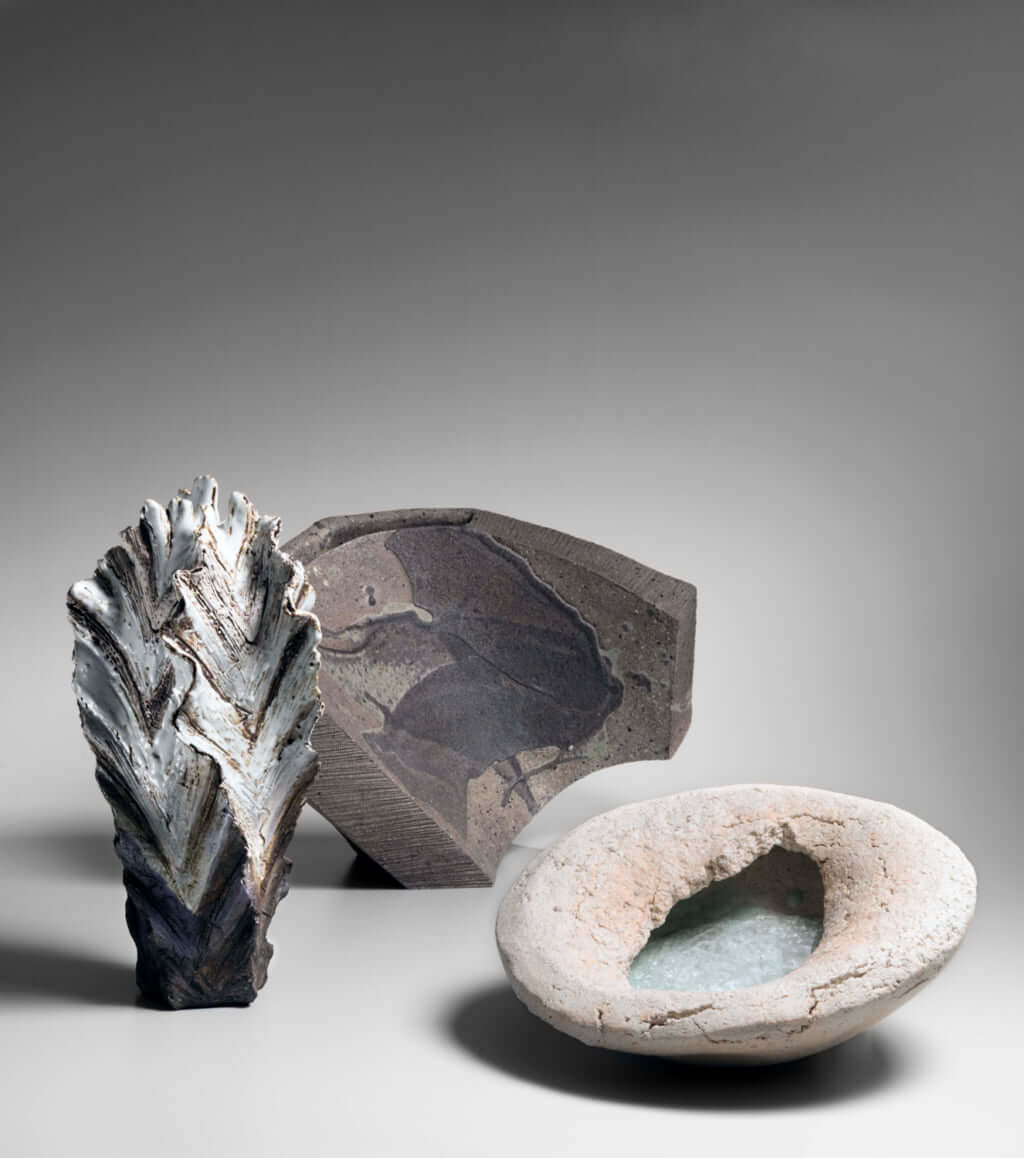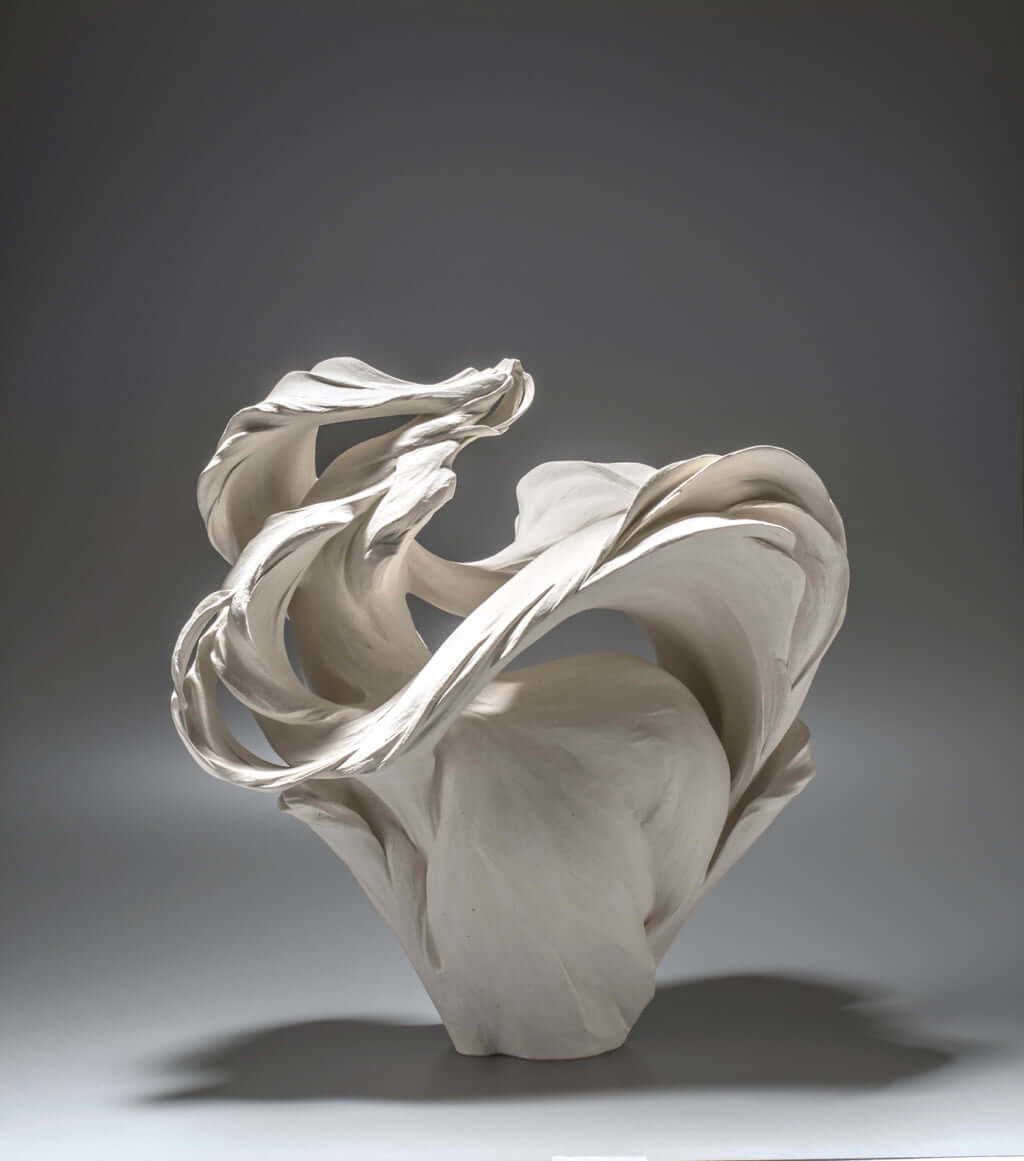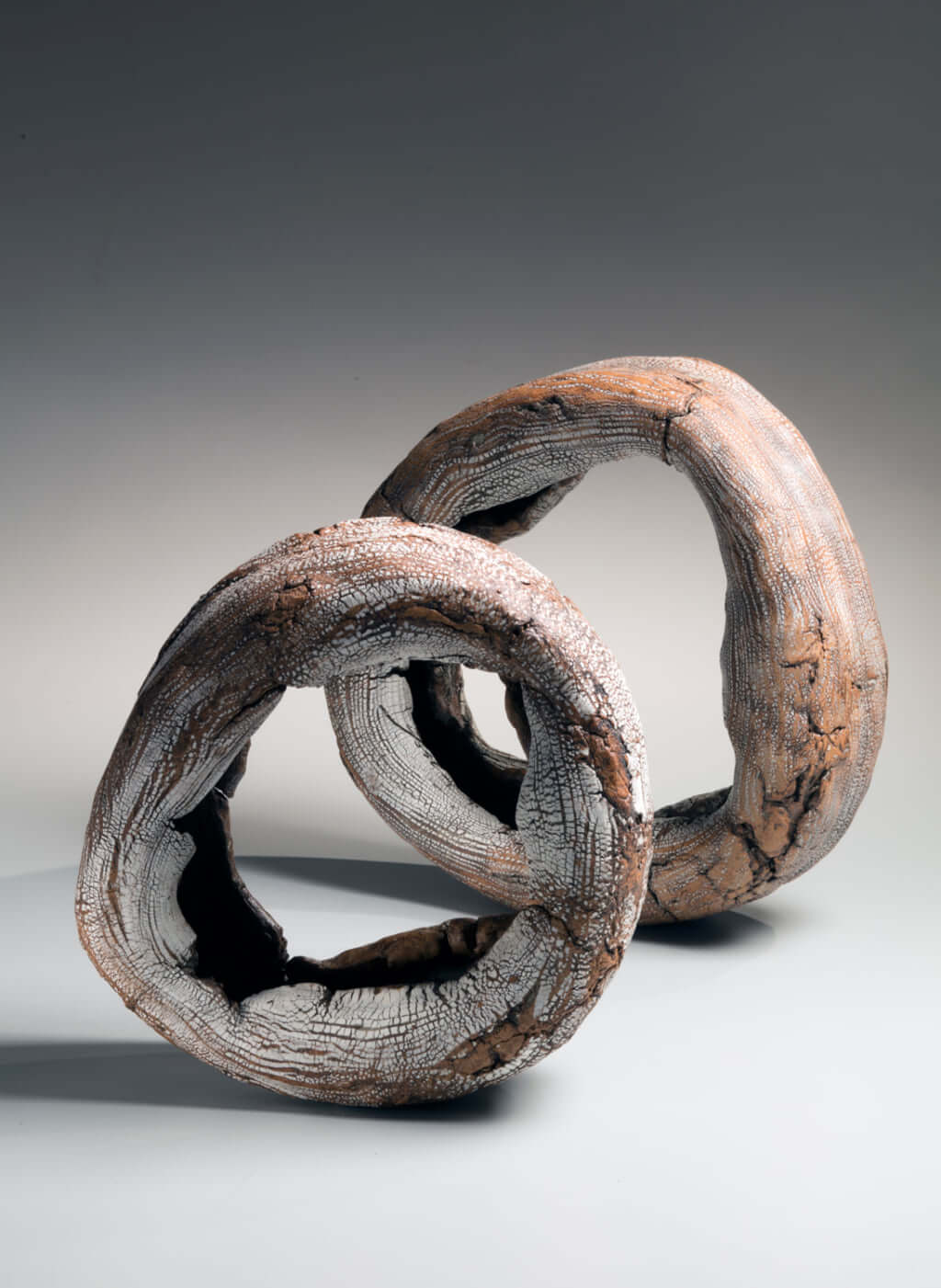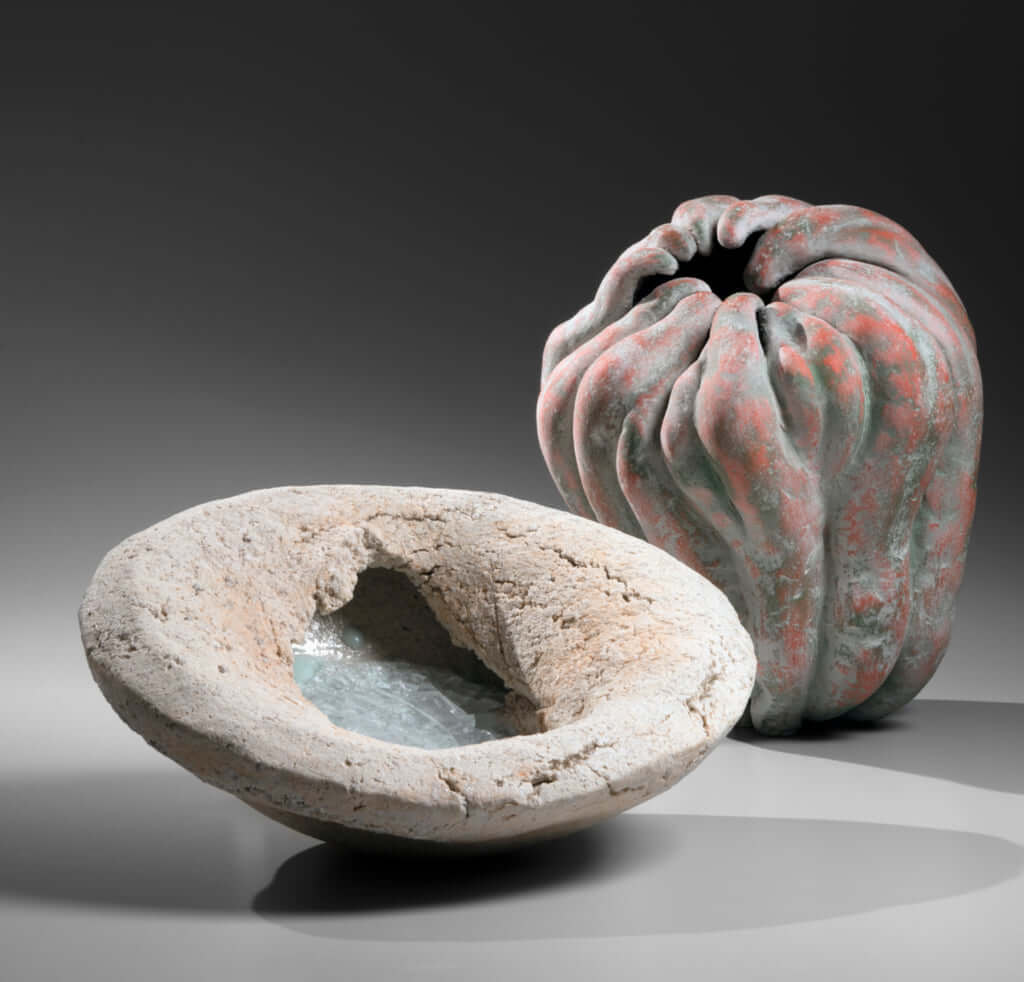Japan’s Female Ceramists Celebrated on the International Stage
After the Second World War, women enriched the production of ceramics, breathing new life into the discipline.

From left: Koike Shoko, 2002, On loan from a Private Collection, USA; Hoshino Kayoko, Cut Out 16 – 12, 2016, On loan from Joan B Mirviss LTD; Ogawa Machiko, Heki-yuu ban; Blue-green/clear glazed vessel, 2008, On loan from Joan B Mirviss LTD
For a long time, women in Japan were allowed little involvement in the production of ceramics. Not permitted to create pieces, they were restricted to finishing, painting, and decorating items. That was until World War II changed everything: from the 1950s, women began to enrol in apprenticeship programmes, opened their own studios, and, collectively, breathed new life into ceramics.
From September 2018 until January 2019, the Gardiner Museum in Toronto, the only museum in Canada to be dedicated to ceramics, celebrated the ‘independence, creativity, and technical genius’ of these female artists in an exhibition entitled Japan Now: Female Masters. The pieces displayed, selected by New York-based collector Joan B. Mirviss, exemplify this new style of Japanese ceramics, liberated from codes and rules.
The work of female pioneers
Toshiko Takaezu, who passed away in 2011, is often cited as the pioneer of this movement. Throughout her career, she played a significant role in elevating ceramics from a craft to an art by forcing functionality to take a back seat: her works, in the shape of pebbles or cylinders, are sometimes minuscule and often oversized, and virtually always impossible to use in everyday life.
Many other female artists have followed in her footsteps over the decades. Their pieces, as creative as they are impractical, keep Toshiko Takaezu’s spirit alive. This is especially true of Sakurai Yasuko’s Flower vases (pierced with apertures, meaning they could never be filled with water) or those by Kishi Eiko, which can only hold one or two flowers at a time.
Among Toshiko Takaezu’s successors, Fujikasa Satoko, born in 1980, particularly stands out. Her fascinating body of work, in neutral tones, celebrates the fluidity of ceramics. The shapes and colours she uses recall the fabric Jeanne Lanvin would drape over mannequins in the early days of the eponymous fashion house.
These masterful pieces, which seem to be constantly in movement, pay homage to the words spoken by Toshiko Takaezu in 1975: ‘You are not an artist simply because you paint or sculpt pots that cannot be used’, she stated. ‘An artist is a poet in their own medium. And when an artist produces a good piece, that work has mystery, an unsaid quality; it is alive.’
Japan Now: Female Masters, an exhibition that took place from 7 September 2018 to 13 January 2019 at the Gardiner Museum in Toronto.

Fujikasa Satoko, Hiten; Seraphim, 2016, On loan from the Diana Reitberger Collection

Futamura Yoshimi, 2016, On loan from Joan B Mirviss LTD

Koike Shoko, 2002, Stoneware with creamy white, brown, and silver glazes, On loan from a Private Collection, USA

Hattori Makiko, Ryū: Flow, 2017, On loan from the Diana Reitberger Collection

Left: Ogawa Machiko, Heki-yuu ban; Blue-green/clear glazed vessel, 2008; Right: Katsumata Chieko, Akoda: Pumpkin, 2016, Both on loan from the Diana Reitberger Collection
TRENDING
-
A House from the Taisho Era Reveals Its Secrets
While visiting an abandoned building, Hamish Campbell discovered photographs the owner had taken of the place in the 1920s.

-
The Taboo-Breaking Erotica of Toshio Saeki
The master of the 1970s Japanese avant-garde reimagined his most iconic artworks for a limited box set with silkscreen artist Fumie Taniyama.

-
With Meisa Fujishiro, Tokyo's Nudes Stand Tall
In the series 'Sketches of Tokyo', the photographer revisits the genre by bringing it face to face with the capital's architecture.

-
Masahisa Fukase's Family Portraits
In his series ‘Family’, the photographer compiles surprising photos in which he questions death, the inescapable.

-
Hajime Sorayama's Futuristic Eroticism
The illustrator is the pioneer for a form of hyperrealism that combines sensuality and technology and depicts sexualised robots.





